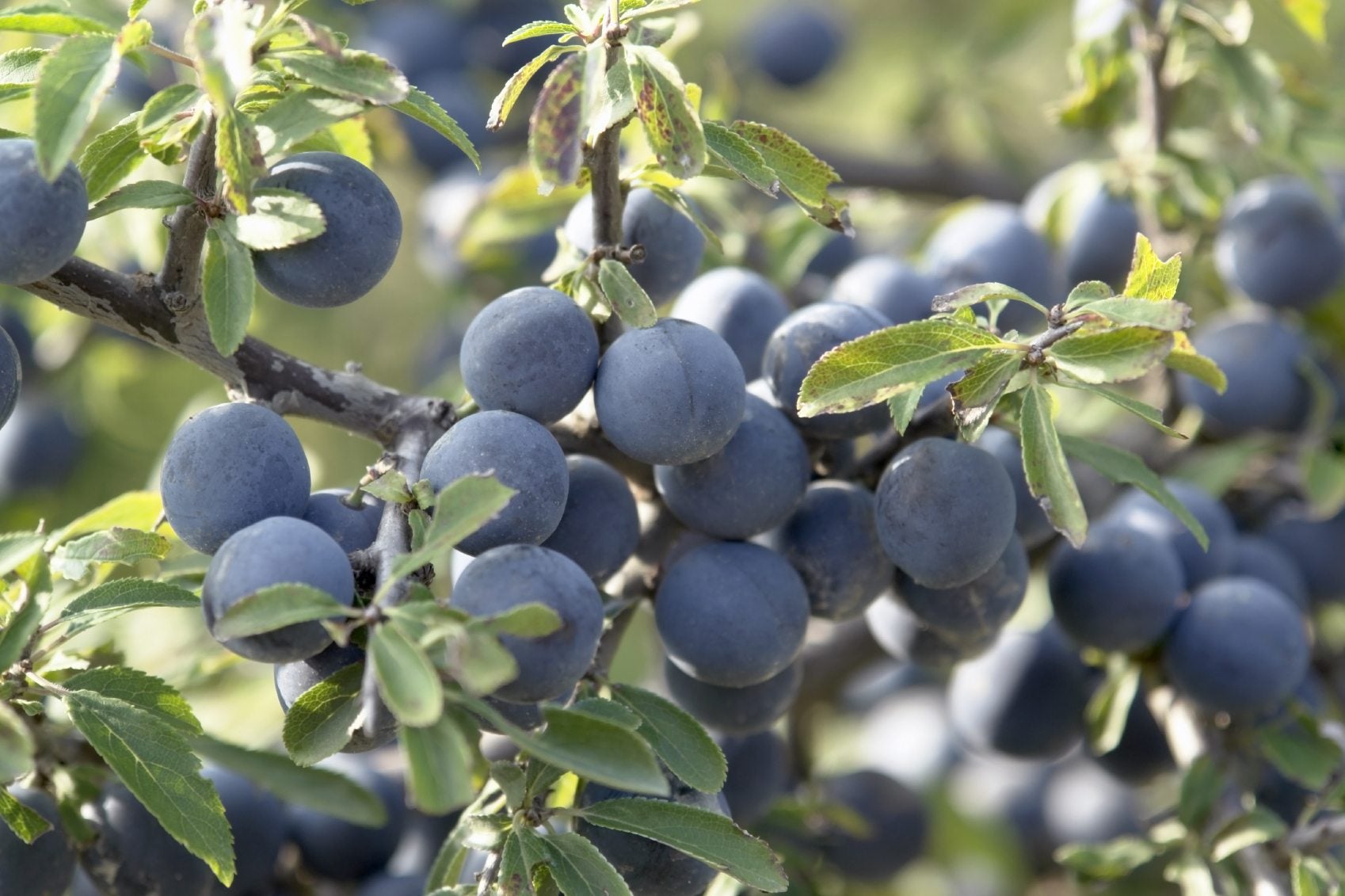Prunus Spinosa Care: Tips For Growing A Blackthorn Tree

Blackthorn (Prunus spinosa) is a berry producing tree native to Great Britain and throughout most of Europe, from Scandinavia south and east to the Mediterranean, Siberia, and Iran. With such an extensive habitat, there must be some innovative uses for blackthorn berries and other interesting tidbits of information about blackthorn plants. Let's read on to find out.
Information about Blackthorn Plants
Blackthorns are small, deciduous trees also referred to as ‘sloe.' They grow in scrubs, thickets, and woodlands in the wild. In the landscape, hedges are the most common use for growing blackthorn trees. A growing blackthorn tree is spiny and densely limbed. It has smooth, dark brown bark with straight side shoots that become thorned. The leaves are wrinkled, serrated ovals that are pointed at the tip and tapered at the base. They may live for up to 100 years. Blackthorn trees are hermaphrodites, having both male and female reproductive parts. The flowers appear before the tree leafs out in March and April and are then pollinated by insects. The results are blue-black fruit. Birds enjoy eating the fruit, but the question is, are blackthorn berries edible for human consumption?
Uses for Blackthorn Berry Trees
Blackthorn trees are extremely wildlife friendly. They provide food and nesting space for a variety of birds with protection from prey due to the spiny branches. They are also a great source of nectar and pollen for bees in the spring and provide food for caterpillars on their journey to becoming butterflies and moths. As mentioned, the trees make a terrific impenetrable hedge with an enclosure of painful spike laden interwoven branches. Blackthorn wood is also traditionally used for making the Irish shillelaghs or walking sticks. As to the berries, the birds eat them, but are blackthorn berries edible for humans? I wouldn't recommend it. While a small amount of raw berry will probably have little effect, the berries do contain hydrogen cyanide, which in larger doses may definitely have toxic effect. However, the berries are processed commercially into sloe gin as well as in wine making and preserves.
Prunus spinosa Care
Very little is needed in the way of care for Prunus spinosa. It grows well in a variety of soil types from sun to partial sun exposures. It is, however, susceptible to several fungal diseases which can cause blossom wilt and, therefore, affect fruit production.
Sign up for the Gardening Know How newsletter today and receive a free copy of our e-book "How to Grow Delicious Tomatoes".

Amy Grant has been gardening for 30 years and writing for 15. A professional chef and caterer, Amy's area of expertise is culinary gardening.
